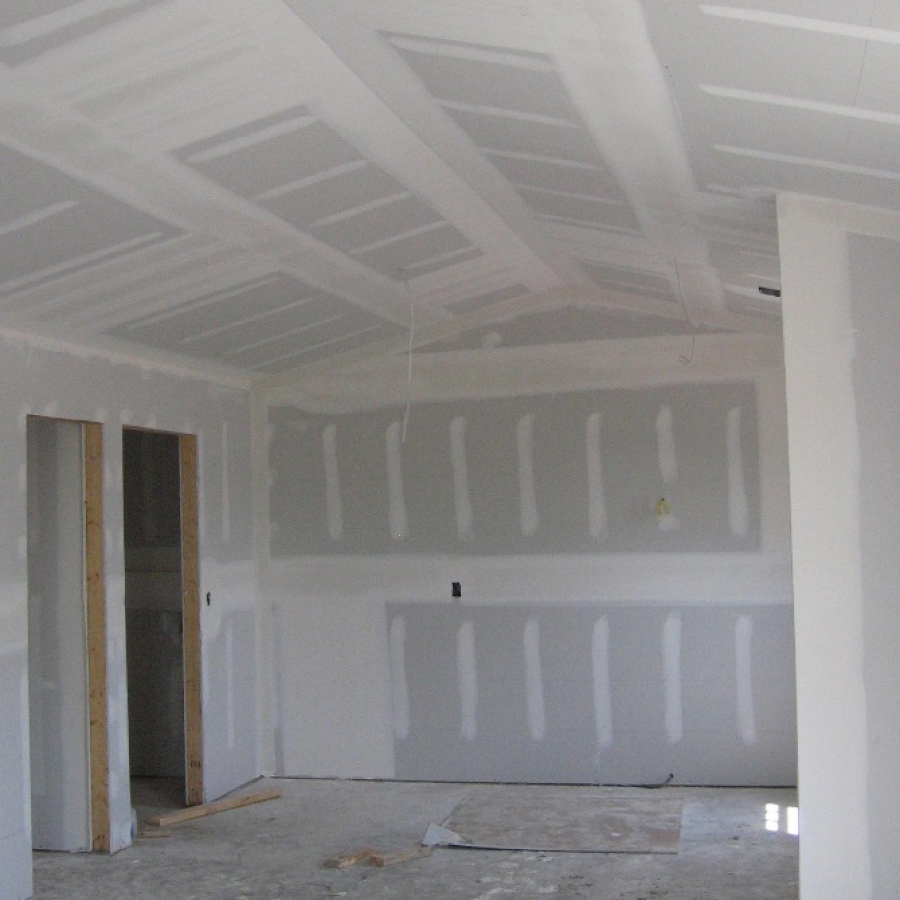Air Barriers
Air barriers block random air movement through building cavities. As a result, they help prevent air leakage in your home, which can account for 30% or more of a home's heating and cooling costs. Air barriers also help control moisture in a home. While they stop most air movement, air barriers also allow any water vapor that does enter to diffuse back out again.

Topic Summary
Types of Air Barriers
Many of the materials used in a house for structural purposes and finished surfaces also act as air barriers. For many homes, these materials include the following sheet goods that form the ceilings, walls, and floors:
- Drywall
- Sheathing
- Decking
The most common air barrier material is house wrap. House wraps are usually wrapped around the exterior of a house during construction. Some wraps have better weathering or water-repelling abilities than others. All come in a variety of sizes for different purposes. Wraps usually consist of fibrous spun polyolefin plastic, which is matted into sheets and rolled up for shipping. House wraps may also have other materials woven or bonded to them to help resist tearing.
In wet climates, house wrap sometimes reacts poorly with certain kinds of wood siding. Lignin (a naturally occurring substance in many species of wood) is water soluble and acts as a detergent. Like all detergents, it decreases surface tension and destroys the house wrap's ability to repel water. Field research has shown that wood lignin makes it easier for liquid water to pass into the wall. Certain types of wood siding, such as redwood, cedar, and manufactured hardboard siding, seem to accelerate the problem. To avoid this problem, carefully attach heavy building paper (30-pound asphalt impregnated) to the walls as a substitute for house wrap. You also might install felt paper over the house wrap as a water-repellent surface.
Some types of insulation, when densely packed in wall cavities and crevices, can be effective at reducing air flow as well as heat flow.
The type of air barrier to choose and how to use it depends mainly on where you build a house and the climate. In a southern humid climate, you might also consider using a combination air barrier/vapor diffusion retarder.
Continuous Air Barrier
To create a continuous air barrier throughout your home for maximum energy efficiency, you need to seal all the holes and seams between any sheet goods with durable caulk, gaskets, and/or foam sealants.
If you use a house wrap, sealing all of its joints with "house wrap tape" is a good practice that improves the wrap's performance about 20%. All house wrap manufacturers have a special tape for this purpose.
You also might consider using the Airtight Drywall Approach or Simple Caulk and Seal wall construction technique to create a continuous air barrier.
Article source: The U.S. Department of Energy’s Office of Energy Efficiency and Renewable Energy (EERE). For the most up-to-date information please visit the EERE website.



